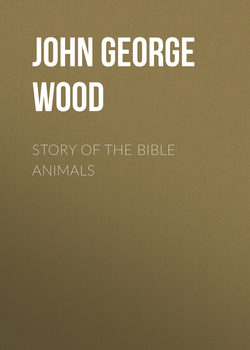Читать книгу Story of the Bible Animals - John George Wood - Страница 27
THE FALLOW-DEER, OR BUBALE
ОглавлениеThe word Jachmur evidently represents a species of antelope—Resemblance of the animal to the ox tribe—Its ox-like horns and mode of attack—Its capability of domestication—Former and present range of the Bubale—Its representation on the monuments of ancient Egypt—Delicacy of its flesh—Size and general appearance of the animal.
It has already been mentioned that in the Old Testament there occur the names of three or four animals, which clearly belong to one or other of three or four antelopes. Only one of these names now remains to be identified. This is the Jachmur, or Yachmur, a word which has been rendered in the Septuagint as Boubalos, and has been translated in our Authorized Version as Fallow Deer.
We shall presently see that the Fallow Deer is to be identified with another animal, and that the word Jachmur must find another interpretation. If we follow the Septuagint, and call it the Bubale, we shall identify it with a well-known antelope called by the Arabs the "Bekk'r-el-Wash," and known to zoologists as the Bubale (Acronotus bubalis).
This fine antelope would scarcely be recognised as such by an unskilled observer, as in its general appearance it much more resembles the ox tribe than the antelope. Indeed, the Arabic title, "Bekk'r-el-Wash," or Wild Cow, shows how close must be the resemblance to the oxen. The Arabs, and indeed all the Orientals in whose countries it lives, believe it not to be an antelope, but one of the oxen, and class it accordingly.
How much the appearance of the Bubale justifies them in this opinion may be judged by reference to the figure on page 143. The horns are thick, short, and heavy, and are first inclined forwards, and then rather suddenly bent backwards. This formation of the horns causes the Bubale to use his weapons after the manner of the bull, thereby increasing the resemblance between them. When it attacks, the Bubale lowers its head to the ground, and as soon as its antagonist is within reach, tosses its head violently upwards, or swings it with a sidelong upward blow. In either case, the sharp curved horns, impelled by the powerful neck of the animal, and assisted by the weight of the large head, become most formidable weapons.
It is said that in some places, where the Bubales have learned to endure the presence of man, they will mix with his herds for the sake of feeding with them, and by degrees become so accustomed to the companionship of their domesticated friends, that they live with the herd as if they had belonged to it all their lives. This fact shows that the animal possesses a gentle disposition, and it is said to be as easily tamed as the gazelle itself.
Even at the present day the Bubale has a very wide range, and formerly had in all probability a much wider. It is indigenous to Barbary, and has continued to spread itself over the greater part of Northern Africa, including the borders of the Sahara, the edges of the cultivated districts, and up the Nile for no small distance. In former days it was evidently a tolerably common animal of chase in Upper Egypt as there are representations of it on the monuments, drawn with the quaint truthfulness which distinguishes the monumental sculpture of that period.
THE BUBALE, OR FALLOW-DEER OF SCRIPTURE.
It is probable that in and about Palestine it was equally common, so that there is good reason why it should be specially named as one of the animals that were lawful food. Not only was its flesh permitted to be eaten, but it was evidently considered as a great dainty, inasmuch as the Jachmur is mentioned in 1 Kings iv. 23 as one of the animals which were brought to the royal table. "Harts and Roebucks and Fallow-Deer" are the wild animals mentioned in the passage alluded to.
